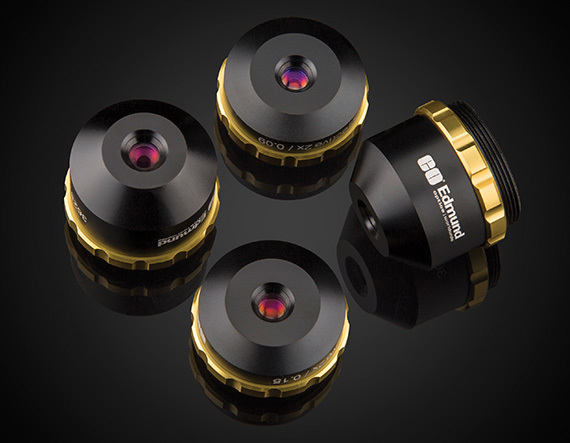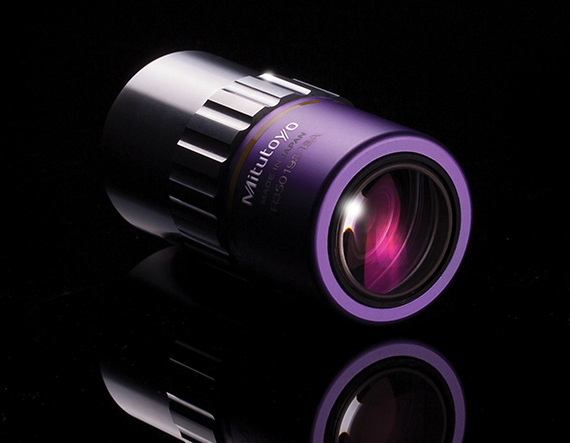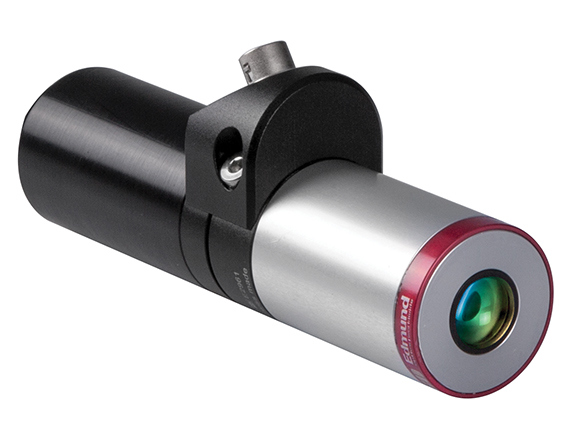

|
|
Miniaturization for added mobility |
|
|
UV wavelengths for increased resolution and contrast enhancement |
|
|
Automated systems for more throughput |
|
|
Liquid lens integration for quick focus adjustment |
Optical microscopes have enabled advancements in science, medicine, and industrial applications since the 17th century. They are continually evolving to tackle the challenges of the future. Compact, miniaturized objectives allow microscopy systems to be portable, enabling rapid response in the field. Electrically-tunable liquid lens integration and system automation help drastically increase the throughput of industrial applications, and many microscopy applications are moving to ultraviolet (UV) wavelengths to improve resolution and contrast. These developments allow microscopy systems to meet the demanding requirements of emerging applications.


TECHSPEC® Ultra Compact Objective Assemblies are Edmund Optics' smallest objectives with nearly the smallest available form factor in the market in their class of working distance, resolution, and magnification. Designed at a magnification of 2X, TECHSPEC® Ultra Compact Objective Assemblies can be easily configured to magnifications of 4X, 5X, 10X, 15X, and 20X by adding extension tubes.
Learn More Mitutoyo NUV and UV Infinity Corrected Objectives
Mitutoyo NUV and UV Infinity Corrected Objectives
Mitutoyo's NUV and UV infinity corrected long working distance objectives combine improved resolution of using UV wavelengths with the benefits of the standard M Plan Apo and M Plan Apo SL series objectives. They have excellent performance at the doubled, tripled, and quadrupled Nd:YAG harmonics. They are ideal for microscopic inspection of miniscule features, laser materials processing, and medical laser applications.
Learn More

TECHSPEC® Tunable Compact Objective Liquid Lens Assemblies integrate a liquid lens with our finite conjugate TECHSPEC® Compact Objective Assemblies, allowing for quick working distance adjustment and are available in 2X and 5X versions. They are ideal for a variety of biomedical and machine vision applications including microscopy, pharmaceutical inspection, flow cytometry, and microscopic industrial inspection.
Learn More How small are the miniaturized TECHSPEC® Ultra Compact Objective Assemblies?
How small are the miniaturized TECHSPEC® Ultra Compact Objective Assemblies?
 What magnifications are available for the TECHSPEC® Ultra Compact Objective Assemblies?
What magnifications are available for the TECHSPEC® Ultra Compact Objective Assemblies?
The TECHSPEC® Ultra Compact Objective Assemblies are designed at 2X magnification, but are easily configurable to achieve 4X, 5X, 10X, 15X, and 20X magnifications by adding extension tubes.
 Are motorized mechanics available for automating microscope systems?
Are motorized mechanics available for automating microscope systems?
Yes, a variety of motorized stages and slides are available
 What are the wavelength ranges of the Mitutoyo NUV and UV Infinity Corrected Objectives?
What are the wavelength ranges of the Mitutoyo NUV and UV Infinity Corrected Objectives?
The NUV Mitutoyo Infinity Corrected Objectives have a wavelength range of 355-620nm and the UV versions are designed for 266nm and 355nm.
or view regional numbers
QUOTE TOOL
enter stock numbers to begin
Copyright 2023 | Edmund Optics, Ltd Unit 1, Opus Avenue, Nether Poppleton, York, YO26 6BL, UK
California Consumer Privacy Act (CCPA): Do Not Sell or Share My Personal Information
California Transparency in Supply Chains Act